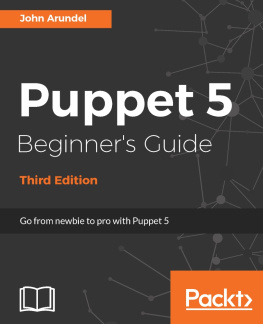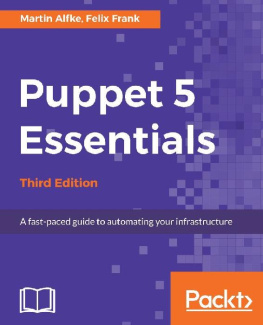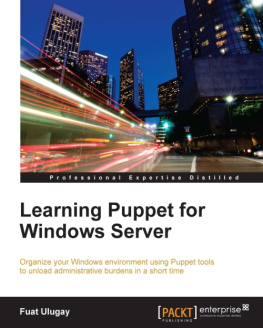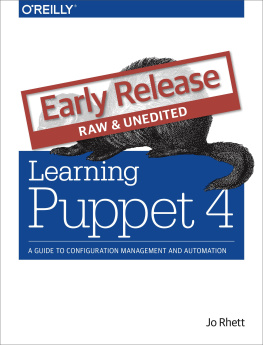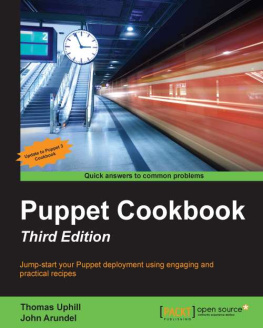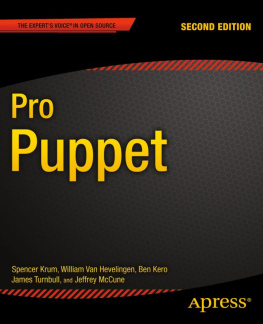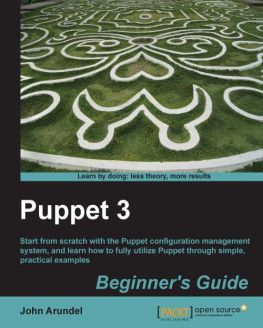Loope - Managing Infrastructure with Puppet
Here you can read online Loope - Managing Infrastructure with Puppet full text of the book (entire story) in english for free. Download pdf and epub, get meaning, cover and reviews about this ebook. City: Beijing, Sebastopol, Calif, year: 2011, publisher: OReilly Media, genre: Computer. Description of the work, (preface) as well as reviews are available. Best literature library LitArk.com created for fans of good reading and offers a wide selection of genres:
Romance novel
Science fiction
Adventure
Detective
Science
History
Home and family
Prose
Art
Politics
Computer
Non-fiction
Religion
Business
Children
Humor
Choose a favorite category and find really read worthwhile books. Enjoy immersion in the world of imagination, feel the emotions of the characters or learn something new for yourself, make an fascinating discovery.

Managing Infrastructure with Puppet: summary, description and annotation
We offer to read an annotation, description, summary or preface (depends on what the author of the book "Managing Infrastructure with Puppet" wrote himself). If you haven't found the necessary information about the book — write in the comments, we will try to find it.
Get started with Puppet, and learn how this popular configuration management framework helps you automate your servers. This concise introduction shows you how to use Puppets tools and templates to organize and execute configuration plans on Linux, Unix, and Windows servers. Through code samples and real-world examples, youll learn how to manage pools of servers and virtual instances, and how to administer access control. If youre new to Puppet, but familiar with systems administration and Ruby language basics, this book is the ideal way to start using this open source framework.
Loope: author's other books
Who wrote Managing Infrastructure with Puppet? Find out the surname, the name of the author of the book and a list of all author's works by series.


